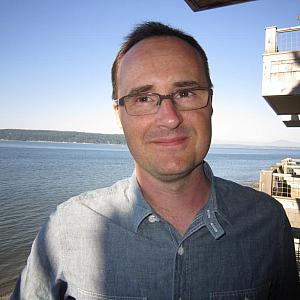
William Heisel
Contributing Editor

Contributing Editor
I have reported on health for most of my career. My work as an investigative reporter at the Los Angeles Times and the Orange County Register exposed problems with the fertility industry, the trade in human body parts and the use of illegal drugs in sports. I helped create a first-of-its-kind report card judging hospitals on a wide array of measures for a story that was a finalist for the Pulitzer Prize. I was one of the lead reporters on a series of stories about lead in candy, a series that also was a finalist for the Pulitzer.For the Center for Health Journalism (previously known as Reporting on Health), I have written about investigative health reporting and occasionally broke news on my column, Antidote. I also was the project editor on the Just One Breath collaborative reporting series. These days, for the University of Washington, I now work as the Executive Director for Insitutue for Health Metrics and Evaluation's Client Services, a social enterprise. You can follow me on Twitter @wheisel.
<p>Everyone could benefit from taking cholesterol-lowering statins. Who wants gunk clogging up their arteries, right? And even if your cholesterol is already low, you may gain some wonderful side benefit.</p> <p>That is the overwhelming message driven home by a combination of marketing campaigns and overly enthusiastic health reporting.</p>
<p>Kevin Jermaine Edmonds, a young ob/gyn with a brand new practice, presumably would have better luck than most trying to impress a woman he has met at a bar.</p><p>But why bother leaving the office at all when your calendar is full of women undressing and telling you the most intimate details of their lives?</p><p>Doctor-patient relationships are barred by state law and by long established medical ethics. In part, these relationships are discouraged because they can cloud a physician’s judgment and potentially lead to patient harm.</p>
<p>Have you ever gone in for an oil change and left with the suspicion that the mechanics didn’t do anything beyond opening your hood?</p> <p>Anemona Hartocollis at <em>The New York Times</em> has exposed this same type of behavior in a much more critical venue: <a href="http://www.nytimes.com/2010/05/26/nyregion/26hospital.html">a local hospital</a>. She <a href="http://www.nytimes.com/2010/05/26/nyregion/26hospital.html">wrote</a>:<…;
<p>Decades of anti-smoking public health campaigns have turned into background noise. We all know smoking is bad for us, but yet we allow ourselves to get caught up in the sexiness of it when a show like Mad Men comes along. Even our president has admitted to a regular habit.</p>
<p>What does it take for your record to be blemished if you’re a doctor in Florida?</p> <p>Would attempting to have sex with a child leave a dent?</p> <p>Apparently not.</p> <p>As <a href="http://muckrack.com/SShealthwriter">Bob LaMendola</a> at the Florida <em>Sun Sentinel</em> <a href="http://articles.sun-sentinel.com/2010-05-15/business/fl-florida-doctor-…;, Dr. Stuart F. Tillman, a Tallahassee anesthesiologist, was busted in July 2009 and charged with soliciting sex online from a 14-year-old girl.</p>
<p><a href="http://www.reportingonhealth.org/users/blythe">Blythe Bernhard</a> and Jeremy Kohler at the <em>St. Louis Post-Dispatch</em> have launched a series of stories called “Who protects the patients?”</p> <p>The first in the series, <a href="http://www.stltoday.com/stltoday/news/stories.nsf/st
<p>A new drug comes on the market that promises to improve people’s eyesight. “Clarivue! Make your cloudy days sunny again!”</p> <p>Your editor says, “This Clarivue is like Viagra for eyeballs. It’s going to be flying off the shelves. Write up something for the Web in the next hour.”</p> <p>Your next move should be to find out the NNT: <a href="http://www.cebm.net/index.aspx?o=1044">the number needed to treat</a>. It will help you answer the most important question: How many people would need to take Clarivue in order for one person to actually see better?</p>
<p>Who hasn’t come home from work with a company pen in their pocket? Used the work printer for directions to a restaurant on a Friday afternoon? Answered a call from their mom on the company cell phone?</p> <p>In that spirit, we could consider Dr. Duane Stillions just one of the rest of us.</p> <p>If only he weren’t a children’s physician with a drug habit.</p> <p>Stillions, a 42-year-old anesthesiologist, was caught in May 2009 by Children’s National Medical Center in Washington DC taking painkillers that were meant for kids undergoing surgery.</p>
<p><em>Antidote</em>’s posts over the past two weeks about reporting on risk stirred up some great discussion among journalists and scientists about how to best serve readers. Before launching into a new set of statistical concepts, I wanted to pause and share some of the most useful items.</p> <p>This whole jag about stats was started by a comment Dr. Catherine DeAngelis, the editor of JAMA, made that Vioxx should still be on the market.</p>
<p><img src="/files/u47/Absolute_Risk_-_crop.jpg" width="170" height="228" style="float: left; margin-left: 15px; margin-right: 15px;" /></p><p>If relative risk is the guy that drug companies always want to have at the party, absolute risk is the guy who never gets invited, the total buzz kill, the guy who showed up with someone’s cousin once in a bad outfit and ended up mumbling to himself in the corner about how everything would be better if people just listened to him.</p>